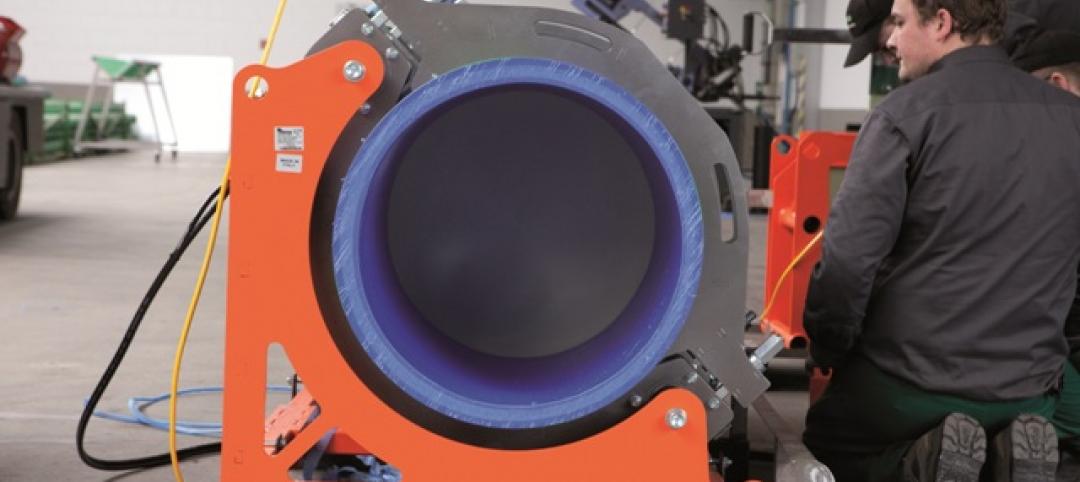Antimicrobial building products marketed as “healthy” or beneficial to human health contain ingredients that may have adverse environmental or human health impacts, and alternative products should be considered whenever possible, according to a new white paper by global architecture and design firm Perkins+Will and the Healthy Building Network (HBN).
Healthy Environments: Understanding Antimicrobial Ingredients in Building Materials exposes the lack of scientific evidence supporting claims that so-called antimicrobial products like paints, kitchen countertops, door handles, flooring, and other interior finishes help ward off communicable diseases. In fact, the report highlights a growing body of research suggesting potential negative impacts of antimicrobials on both the body and the environment. Potential impacts include the possible proliferation of “super bugs” caused by microbial resistance, contamination of aquatic ecosystems, and potential exposure to known or suspected carcinogens like formaldehyde.
“What consumers don’t realize is that the federal government considers antimicrobials pesticides because they are agents used to kill or control living organisms—and they should therefore be used with great care,” says Suzanne Drake, a senior interior designer at Perkins+Will and co-author of the white paper. “Because we caution against using building products containing ingredients suspected of hazardous health impacts, we should avoid products containing antimicrobial ingredients. That includes building products intended for healthcare settings.”
Perkins+Will is placing “Products Marketed as Antimicrobial” on its Precautionary List, urging designers to consider alternatives before specifying them. The move reflects the position of the U.S. Centers for Disease Control and Prevention, the U.S. Food and Drug Administration, and other credible organizations that have reviewed antimicrobial agents and found them to be both ineffective and unnecessary.
“The fact is, there’s zero evidence that antimicrobial additives provide a health benefit,” says Drake.
Building products with antimicrobial additives are relatively new in the marketplace, but their recent surge in popularity has been fueled by manufacturers looking to differentiate themselves and tap into consumer demand for healthy products and healthy built environments. The number of antimicrobial consumer products on the market grew from just a few dozen in 1994 to more than 2,000 in 2014. In some cases, manufacturers add antimicrobial ingredients to a product as a preservative to protect the product from decay, yet they still market the product in ways suggesting that the benefits of the antimicrobials may extend to human health.
“Because the identity and intended purpose of antimicrobials used in building products is often poorly disclosed, it can be difficult to understand what you’re buying,” says Melissa Coffin, principal investigator with HBN and co-author of the white paper. “Perkins+Will’s approach to consider alternative products to those marketing antimicrobial attributes categorically is a good strategy for navigating a complicated issue.” A dedicated appendix in the white paper explains the legal framework that makes the issue so complicated, Coffin adds.
To read a quick overview of the white paper’s top 10 findings, click here.
To read the full white paper, click here.
Related Stories
| Oct 12, 2011
BIM Clarification and Codification in a Louisiana Sports Museum
The Louisiana State Sports Hall of Fame celebrates the sporting past, but it took innovative 3D planning and coordination of the future to deliver its contemporary design.
| Oct 11, 2011
AIA introduces five new documents for use on sustainable projects
These new documents will be available in the first quarter of 2012 as part of the new AIA Contract Documents service and AIA Documents on Demand.
| Oct 11, 2011
Onex completes investment in JELD-WEN
With the completion of the JELD-WEN investment, Onex Partners III is approximately 40% invested.
| Oct 7, 2011
GREENBUILD 2011: UL Environment releases industry-wide sustainability requirements for doors
ASSA ABLOY Trio-E door is the first to be certified to these sustainability requirements.
| Oct 7, 2011
GREENBUILD 2011: Transparent concrete makes its North American debut at Greenbuild
The panels allow interior lights to filter through, from inside.
| Oct 6, 2011
GREENBUILD 2011: Dow Corning features new silicone weather barrier sealant
Modular Design Architecture >Dow Corning 758 sealant used in GreenZone modular high-performance medical facility.
| Oct 6, 2011
GREENBUILD 2011: Kingspan Insulated Panels spotlights first-of-its-kind Environmental Product Declaration
Updates to Path to NetZero.
| Oct 5, 2011
GREENBUILD 2011: Sustainable construction should stress durability as well as energy efficiency
There is now a call for making enhanced resilience of a building’s structure to natural and man-made disasters the first consideration of a green building.
| Oct 5, 2011
GREENBUILD 2011: Roof hatch designed for energy efficiency
The cover features a specially designed EPDM finger-type gasket that ensures a positive seal with the curb to reduce air permeability and ensure energy performance.
| Oct 4, 2011
GREENBUILD 2011: Large diameter polypropylene-random pipe unveiled
Available in North America for large scale piping applications including high-rise buildings, large chilled water systems, district energy, and water mains.

















